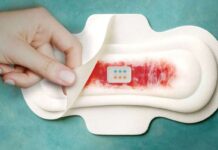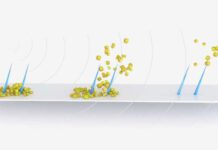How much pain do you experience on a scale of one to ten?
This is a very common question by doctors in the United States. Furthermore, first used in clinics in 1921, this straightforward evaluation is arguably the most used method for quantifying pain even today.
Wunmi Sadik, chair of NJIT’s Department of Chemistry and Environmental Sciences, said
Pain triggers both cognitive analysis and emotions, making its objective measurement challenging,”
Determining its intensity, and the underlying cause it signals, is critical not only for effective pain management, but for diagnosis and treatment as well. People addicted to opioids may exaggerate their pain. Children, the unconscious and people with disabilities may not be able to describe their symptoms at all.”
Innovative Pain Measurement Technology
Director of NJIT’s BioSensor Materials for Advanced Research and Technology (BioSMART) Center, Sadik has researched nanoscale analytical sensors for detecting pain biomarkers in the human body. Moreover, this advancement has the potential to greatly enhance clinical practitioners’ capacity to manage pain. In addition, it can lower the probability of patient addiction as well.
Sadik said
The most significant aspect of this work is that it holds the potential for a point-of-care technology that will not require highly trained staff to operate, and will allow cheap and minimally intrusive measures of biomarkers related to pain
According to Sadik, her lab’s biosensors simply need a patient’s finger-prick blood samples for the examination of two biological molecules. They are cyclooxygenase-2 (COX-2) and inducible nitric oxide synthase (iNOS). Both are released into the bloodstream when pain is present. Moreover, the group has also used artificial intelligence to provide physicians with a concise, minute-by-minute analysis of the findings.
It has proven to have promising accuracy. The group presented the findings of the first clinical studies evaluating the method with patients from Manisa Merkez Efendi State Hospital in Manisa, Turkey, who were in varying degrees of pain in the journal JMIR Biomedical Engineering.
Nearly 80% consistency was found in our preliminary data from trials including 379 patients between the biomarker data and the patient’s self-reported pain, according to Sadik.
That’s heartening. We anticipate that the pain biosensor accuracy will be more than or equivalent to 87% within ±20%. In comparison to the FDA’s accuracy standards for continuous glucose monitoring systems.
Using Medoc thermal simulation technology, Sadik’s lab has started testing their biosensors on healthy volunteer athletes at NJIT. They are comparing patient self-assessment and pain biomarker levels in response to increasing applied temperature.




